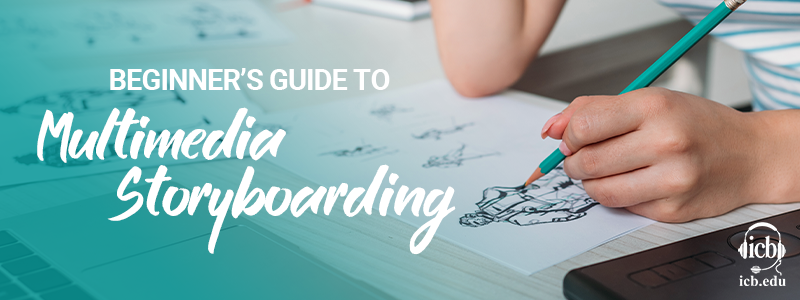
A Beginner’s Guide to Multimedia Storyboarding
In the world of digital media production, storyboarding is an essential tool that helps you visualize and plan out the creative process. Whether you’re working on a film, animation, video game, or any other multimedia project, storyboarding serves as a blueprint for your ideas and allows you to communicate your vision clearly to your team and stakeholders. If you’re new to storyboarding, don’t worry! This beginner’s guide will provide you with the basic steps and tips to get started.
What is Storyboarding?
Storyboarding is the process of visually outlining the key scenes and elements of a multimedia project. It involves creating a sequence of images or sketches that represent the major moments and actions of your story. It is focused on one shot at a time. Each frame typically includes a rough drawing or illustration accompanied by a description or dialogue to provide context.
Why is Storyboarding Important?
Storyboarding offers several benefits that contribute to the success of your project:
- Visualization: Storyboards allow you to visualize your ideas and concepts, helping you see the flow of the story and identify any potential issues or gaps early on.
- Communication: Storyboards serve as a universal language for your team. They help everyone involved in the project, including directors, artists, writers, and animators, understand and contribute to a creative vision. Storyboards are traditionally distributed before the project begins so everyone can establish the right look, the right composition, and the right angle.
- Time and Cost Efficiency: By pre-visualizing a project, you can identify potential problems and make necessary adjustments before investing significant time and resources into production.
How to Start Storyboarding
- Define Your Story: Start by clarifying the narrative or concept you want to convey. Develop a clear understanding of your characters, plot, and key moments. This will serve as the foundation for your storyboard.
- Create a Shot List: Break down your story into individual shots or scenes. Identify the essential moments you want to capture and decide on the composition, camera angles, and any other important visual elements. Learn the language of the camera: High shot, Low shot, Rule of Thirds, shallow focus, and depth of field.

3. Sketch the Frames: Begin sketching your frames based on the shot list. You don’t need to be an excellent artist; rough sketches will suffice as long as they convey the necessary information. Stick figures are fine; however, most storyboard artists have an illustration background. Focus on capturing the key actions, emotions, and composition of each frame.

4. Add Annotations: Include annotations or descriptions alongside each frame to provide additional context. These annotations can include dialogue, camera movements, character movements, or any other details that are crucial to understanding the scene. For example, “Pan across the desolate cubicle farm and settle on the main character as he eats from a box of cereal.”

5. Arrange the Sequence: Arrange your frames in sequential order, following the flow of your story. This will help you determine how each shot transitions into the next, ensuring a coherent and engaging narrative. If done correctly, flipping through the story boards will show what your sequence and ultimately, what the story will look like and how it will flow.
6. Iterate and Refine: Review your storyboard and gather feedback from your team or stakeholders. Make any necessary revisions to improve the clarity and impact of your visuals.
Remember, storyboarding is a creative and iterative process. Should you decide to attend ICB, classes like Video Production IV will help you attain storyboarding skills, and as you gain more experience, you’ll discover techniques and approaches that work best for you. So grab a pen and paper (or use an online storyboarding tool), let your imagination flow, and start storyboarding your next multimedia project. Happy creating! Download your free storyboard below.
Check out ICB
If you’re interested in entering the exciting and ever-evolving multimedia field, ICB can help you get there with our Multimedia Production and Broadcasting program. To learn more, contact us or give us a call at 855-896-3733.

